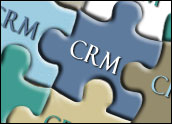
Welcome back to the discussion.
At the top of my list is the idea of resiliency, which I consider a more practical form of sustainability for business. We are now encountering a wave of sustainability-oriented ideas in the popular culture. Forty miles per gallon is the new 30, someone said, and I have seen or heard the word “sustainable” used tentatively more than once in advertising. But I wonder if “sustainable” is really what we should be shooting for.
In too many cases, sustainable simply slows down our use of a resource to “sustainable” levels, but in practice, it is a moving target because it has to be tied to things like demand. What is sustainable at one level may not be at a higher level. And human nature being what it is, we tend to set a marker and promptly forget about it until something breaks, revealing that our sustainable idea is not so any longer.
But the big issue with sustainability is that it often does not engage a new paradigm. It simply extends an older and frequently decrepit one. Resilience puts us on a new track with an unlimited future, and that’s where I prefer to be.
The CRM Side
All this has a practical business and CRM side. I was first impressed with the idea of resiliency while perusing The Post Carbon Reader, a compilation of essays by writers with serious cred on topics like energy, land and water use, and much more. What got my attention, and what inspires this essay, was a report issued by the city of Portland, Ore., dealing with how to make that city more resilient to the long-term effects of peak oil.
Now, I won’t go into what Portland did in any great detail, but the very existence of the report made me ask what for me is the obvious question: Do our businesses have resiliency strategies and plans? Bet not. But can anyone afford not to have a plan? If a regional or city government can develop a resiliency plan, ought we not do the same for our businesses?
I will probably add to my list of ideas for making businesses resilient over time, but for starters, here are three things any, or at least most, businesses can do to help ensure profits in unsure economic times. Of course, they are all mediated by first-class front-office technologies. How could it be otherwise?
Engage in the Subscription Economy
We’ll see some form of economic bounce this year because there is an election looming — that’s my hunch, backed up by much historic data. The bounce might make credit easier to access, but the demand for credit — to grow the economy and its availability — may not be well-matched. In lieu of licenses and product sales, we need to think again about subscriptions. There is some evidence that customers are doing just that.
I think Oracle’s missed revenues in its last reporting period suggest that we’ve hit a turning point in the conventional licensed software business. I believe the demand for subscriptions is accelerating, so let’s give the market what it is asking for.
I have often said that the two great sticking points for moving more aggressively to subscriptions include changes to corporate business models and to the billing systems companies use. The business model change is a big and ugly issue because it alters revenue recognition and can upset valuations, which investors abhor for good reasons.
But there is no time like a recession, or whatever euphemisms you use to describe this era, for making a fundamental change like this, because the economy is roughly synchronized in a trough. Much of your competition is in the same predicament and everyone understands this, and that makes this year a great time for the herd to move as one to subscriptions.
As for the billing system, well, there’s plenty of evidence that there are companies like Zuora, Aria and many others that can help you through the billing system and billing model change.
There’s no time like now for this kind of action, and subscriptions will make your business more resilient, no question.
Deploy UCS
UCS, or unified communications systems, make a lot of sense for anyone thinking about a resilience strategy. Good UCSs combine calendars, email, text, voice (VoIP) and video in a variety of ways that are dirt-cheap and that enable vendors to efficiently communicate with customers. The UCS is also part of a must-have system of internal communications for many companies.
A UCS does its work over the Internet, which is far less expensive than going through the phone company. It’s not a complete strategy because you still need an employee social network, but it is a necessary step on your way to becoming a more resilient company.
Ramp Up Your Cloud, Social and Mobile Strategies
Part of cloud and mobile is implied in the above, but not completely. Cloud and mobile are inextricably tied up with social. Subscriptions are best driven by cloud technologies, and they enable more flexibility and economy in deploying mobility strategies, not to mention the viral impact on and by social. A good cloud, mobile and social strategy will open up your possibilities for deploying expensive and precious resources, like people, that face customers.
While we’re on the subject a cloud-social-mobile (closobile?), investment opens up other possibilities for involving customers in self-help communities with attendant savings.
Much of this isn’t new, but it bears repeating because these ideas happen to work, they have not been universally adopted yet, and importantly, because this is the season for implementing plans and resolutions.
Happy New Year!























































